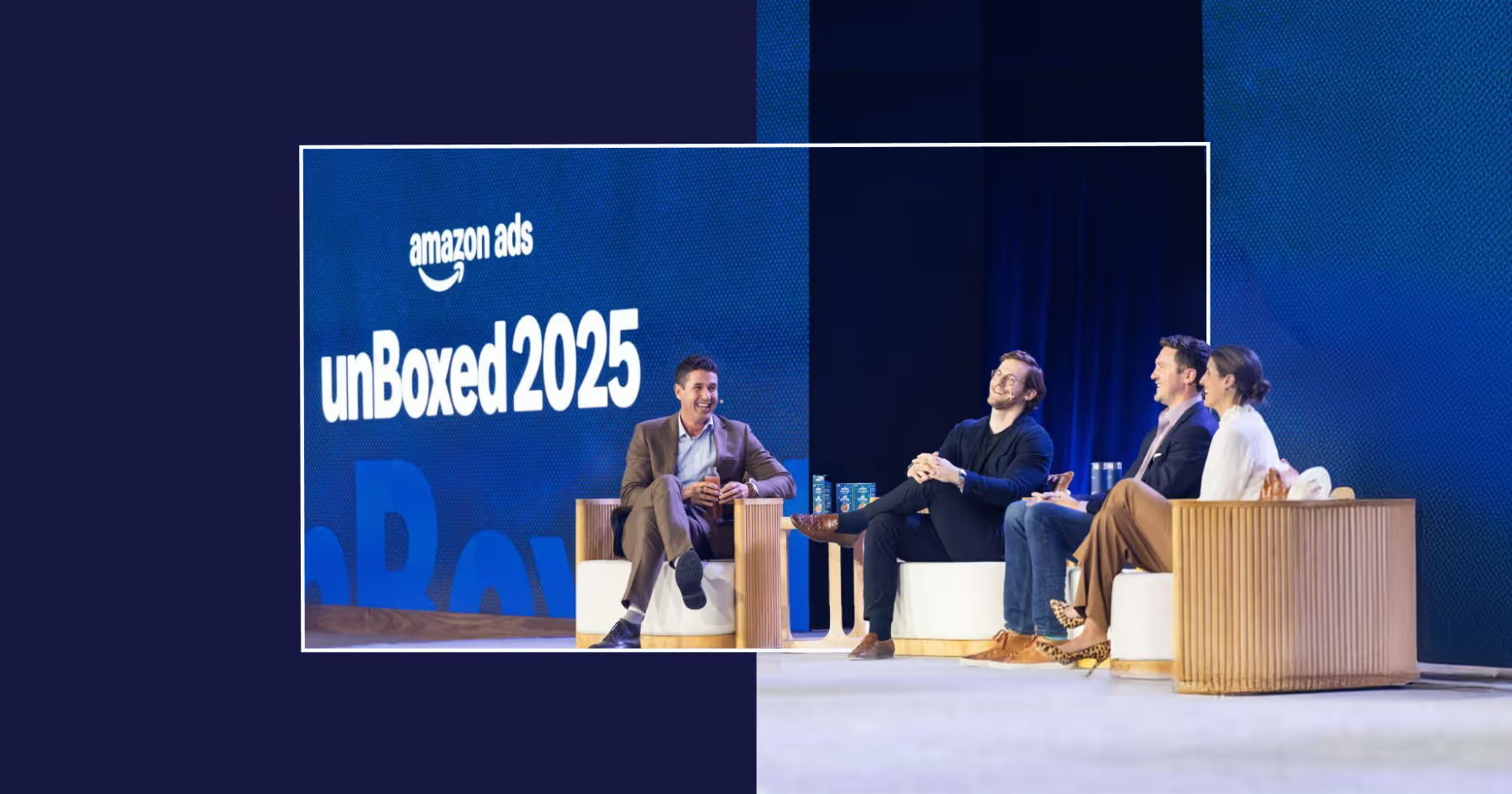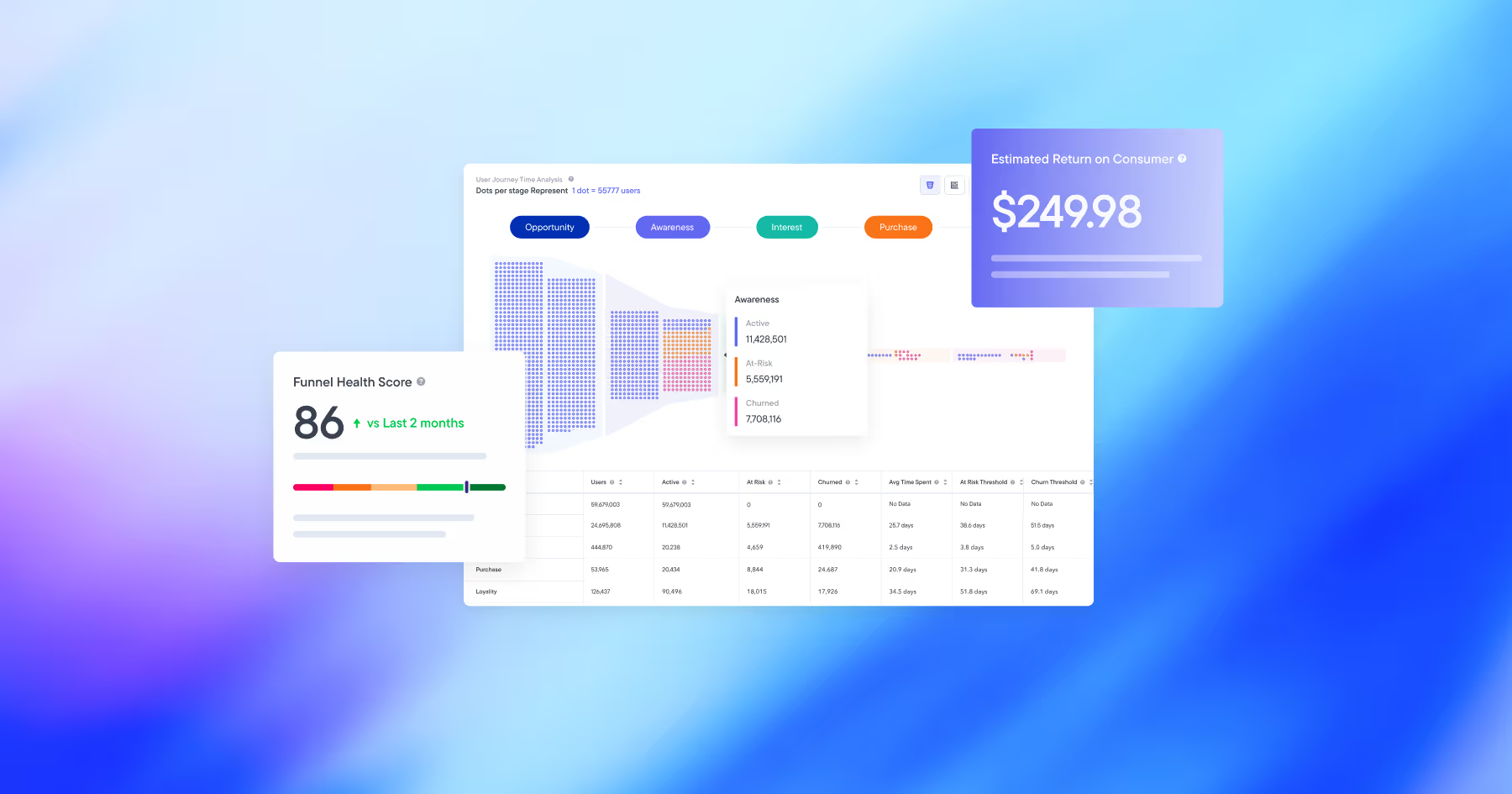
Prime Day 2025 made history, expanding from a two-day promotion to a four-day event that delivered unprecedented results for brands and consumers alike. This extended timeline created more opportunities to reach shoppers, capture demand, and drive sales—setting new benchmarks across key categories.
Key takeaways from Prime Day 2025
Extended event drives double-digit sales growth:
- Flywheel clients achieved substantial double-digit YOY total event sales growth over the four-day event, setting new benchmarks for Prime Day performance.
- Increased attributed sales closely tracked with higher media investment throughout the event, reinforcing the advantage for brands willing to sustain spend over the entire window and pay to play despite hesitations on Days 1+2.
- Takeaway: With the four-day Prime Day format likely to continue, brands should plan for budget allocations that cover the full duration to capitalize on consumer behavior and demand.
Shoppers were browsing early, but only converting as deals ended:
- Shopper behavior revealed a distinct pattern:
- Days 1 & 2: High click-through rates indicated active browsing and product discovery, but conversions remained lower as shoppers evaluated options.
- Days 3 & 4: Conversion rates surged, with many purchases attributed to ad exposures from earlier in the event, demonstrating the importance of early engagement.
- Takeaway: Sustained, consistent advertising throughout Prime Day is essential as early ad impressions drive conversions in the critical final days
Precision targeting fuels higher ad relevancy and engagement:
- This year, click-through rates reached new highs, reflecting sharper ad relevancy and more personalized onsite experiences. Brands utilizing AMC Audiences for Sponsored Ads successfully delivered tailored campaigns, resulting in stronger engagement, even amid challenging conversion conditions due to broader economic factors.
- Brands that prioritized advanced audience segmentation and creative optimization saw the highest engagement and sales uplift.
- Takeaway: Precision targeting and personalization are now table stakes for major retail events. Brands that invest in these strategies are best positioned to maximize performance.
Personalization elevated product discovery
- Amazon advanced its personalized shopping experience with AI-driven features like custom homepage layouts, personal navigation tabs, and tailored product bundles. These enhancements delivered more relevant recommendations, streamlining product discovery and helping shoppers find what they wanted faster.
- However, as personalization narrows the discovery funnel, it’s increasingly important for brands to generate awareness before Prime Day begins. Early lead-up campaigns increase the likelihood that products appear in high-visibility placements such as “Inspired by your recent search history” and “Deals based on your lists” during the event.
- Takeaway: Early brand awareness activities are now essential to maximize visibility in Amazon’s personalized shopping environment and to capture demand during Prime Day.
Onsite observations & what they mean
Product grids prioritized visuals over text
The Amazon homepage featured streamlined product grids that often hid product titles, putting greater emphasis on strong, clear images.
What this means: With visuals now doing the heavy lifting, mobile-optimized HERO images are more important than ever for standing out and driving engagement.
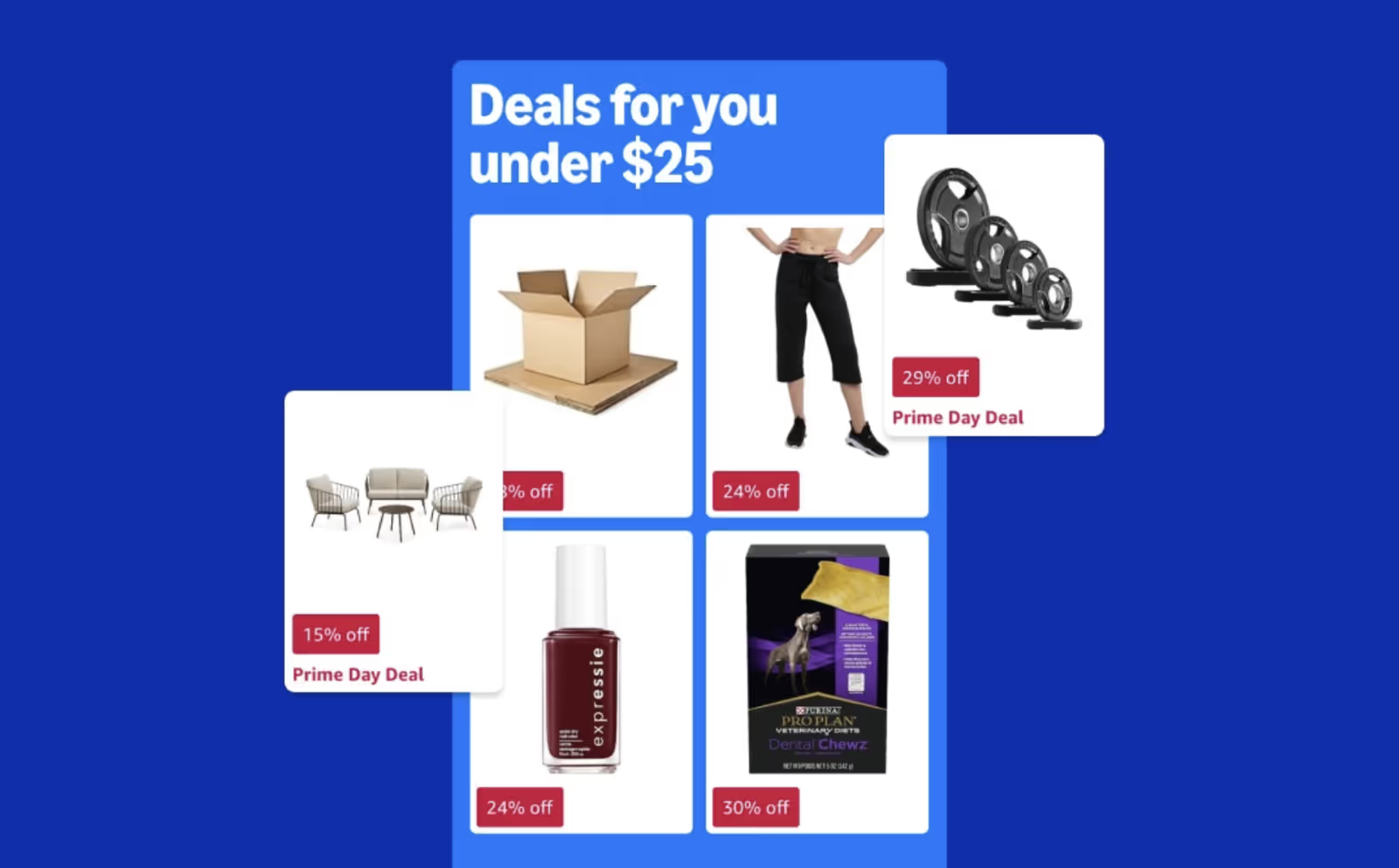
Haul content and value messaging were prominent in the shopping experience
Amazon heavily promoted “Haul” content and value-driven shopping, especially targeting price-sensitive and trend-focused consumers. Influencer content was present but less prominent on the homepage, with haul-style deals driving much of the buzz—particularly in beauty and personal care.
What this means: Consider new ways to participate in Haul or influencer showcases if relevant to boost brand awareness and connect with audiences looking for trending, affordable finds.
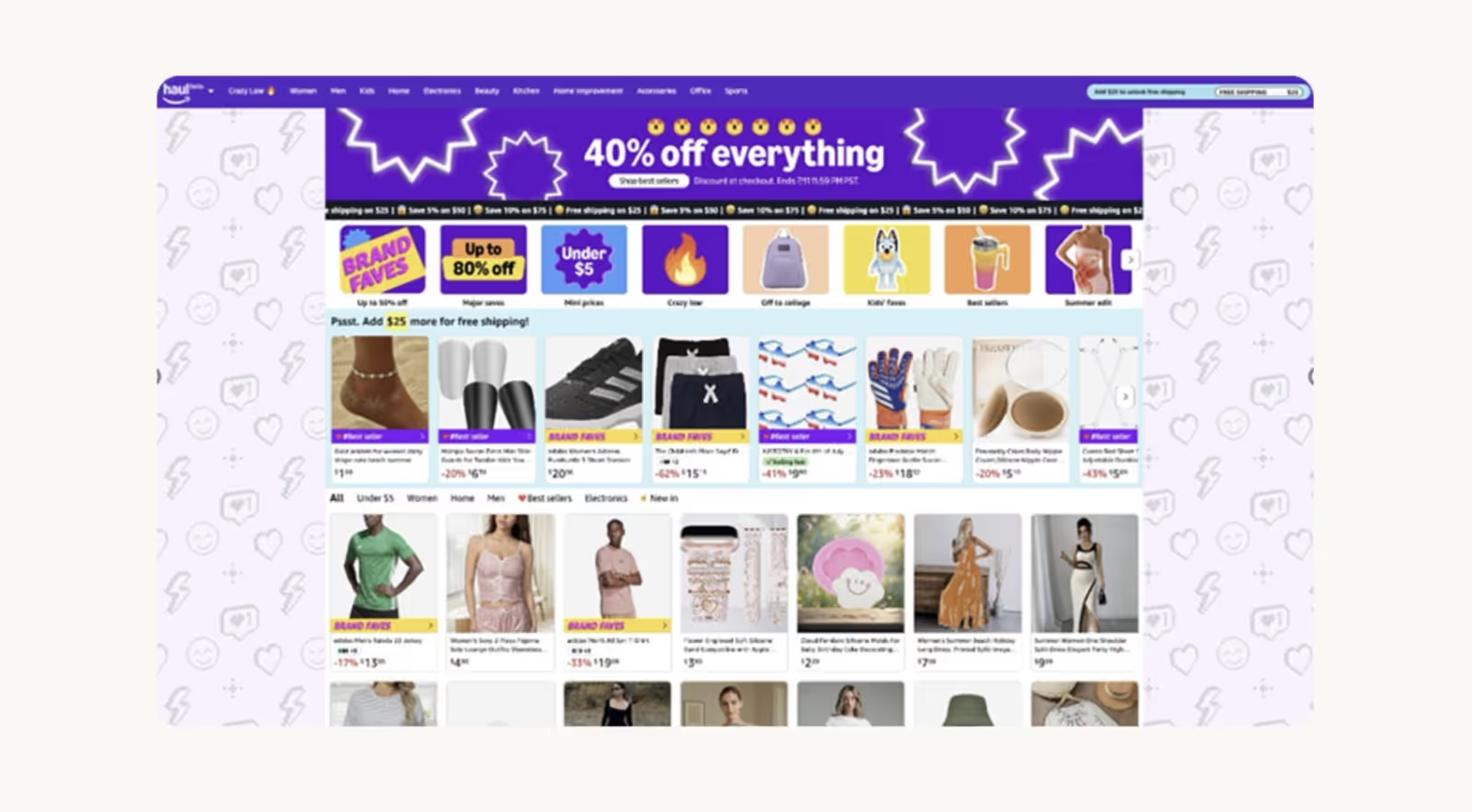
Electronics and household items took significant “featured deals” real estate
Electronics and household categories were heavily spotlighted, with premium visibility throughout Prime Day. Other categories, such as CPG, needed to rely more on search and basket strategies to get in front of shoppers.
What this means: Electronics and household brands should maximize these periods of high visibility, while others may want to focus on search performance and building baskets before the event.
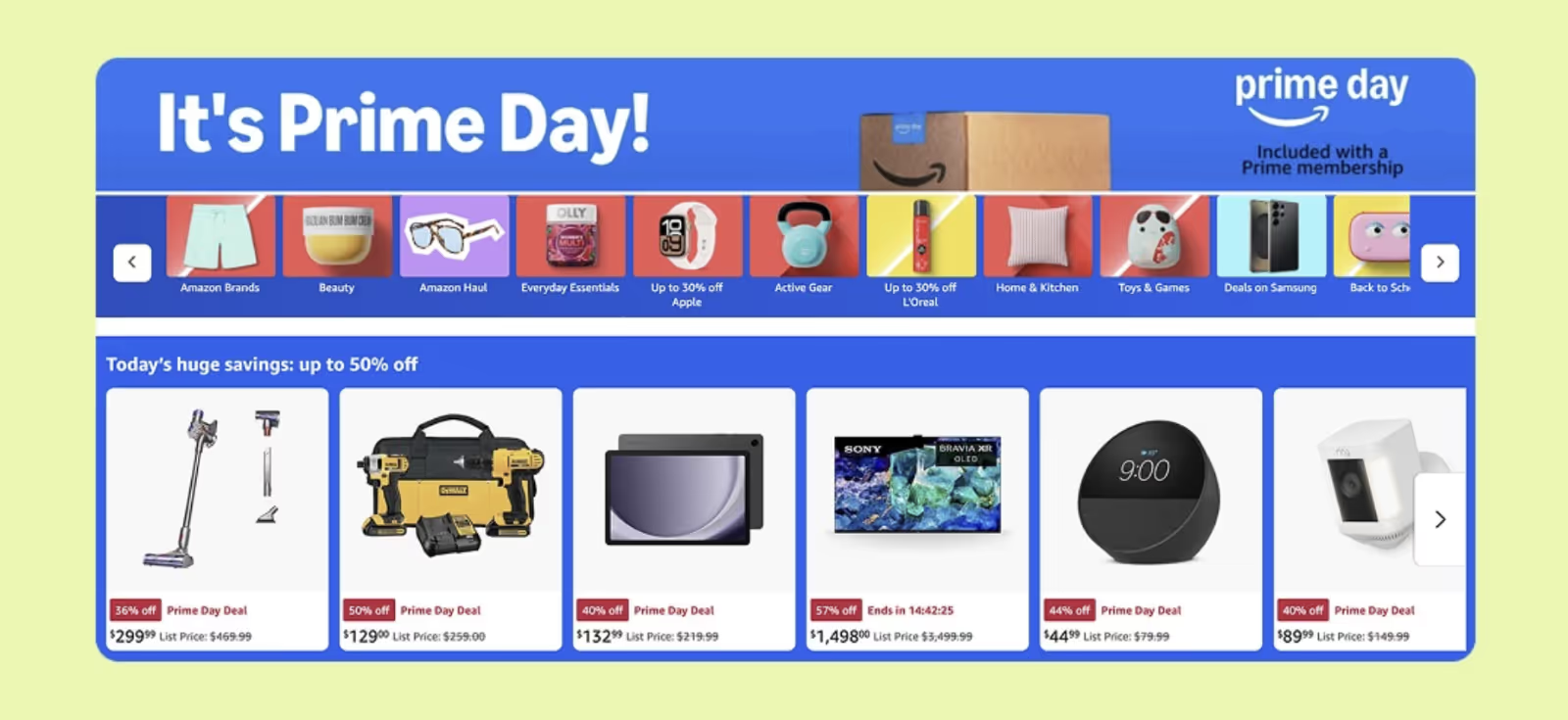
Prime Day, through our clients’ eyes
“Prime Day 2025 saw incredible momentum—our sticks were flying off the digital shelves,” said Aaron Jones, Vice President of eCommerce & Media at Liquid I.V. “Success like this is the result of months of focused planning, smart strategy, and tight execution. Our ongoing partnership with Flywheel has been instrumental in keeping us retail-ready and positioned to win when it matters most.”
“We’ve seen impressive year-over-year growth for Fender guitars on Amazon this Prime Day,” said Keith Legro, VP of Sales at Fender. “Working with Flywheel since 2023, we’ve been able to rethink our approach—optimizing content and targeting new audiences, from first-time players to those shopping for gifts. This partnership has been key to our success, resulting in great momentum for Fender.”
As tentpole events like Prime Day continue to evolve, staying agile and focusing on precision, personalization, and creative adaptation will be key to driving future success. While Prime Day may be over, the takeaways from the event can be applied to future tentpole events that are likely to continue to increase in duration and complexity.
Ready to elevate your tentpole event strategy? Let’s connect.
Ready to grow your business?
Let’s discuss the best approach to meet your brand’s specific needs.
Let's connect.avif)
